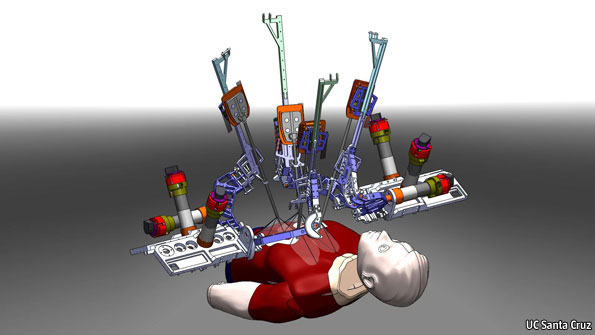Browse by Tag
- "Real" Innovation (2)
- Alignment (6)
- Business Innovation (9)
- Business Plan (2)
- Business Plans (1)
- Creativity (24)
- Critical Success Factors (4)
- Entrepreneurship (9)
- Global Competiveness (4)
- Human Side (11)
- India (1)
- Innovation (4)
- Innovation Consulting (18)
- Innovation Killers (3)
- Innovation Management (18)
- Innovation Tools (17)
- Innovation Training (24)
- Innovations (7)
- Inventions (16)
- IT Innovation (1)
- Leaders (5)
- Leadership (20)
- Leadership Development (13)
- Organizational Leadership (2)
- Organizational Strategy (20)
- Personal Values (6)
- Prediction (5)
- Strategic Innovation (38)
- strategic planning process (4)
- Strategy (3)
- Training (1)
- Vision (5)
- Weekly Dose (8)
Posts by Month
- 2014
- 2013
- 2012
- 2011
- 2010
- 2009
- 2008
- 2006
Example of Innovation using Crowdsourcing in Biology
Cathal Garvey’s home laboratory in Cork, Ireland, is filled with makeshift equipment. His incubator for bacteria is an old Styrofoam shipping box with a heating mat and thermometer that he has modified into a thermostat. He uses a pressure cooker to sterilize instead of an autoclave. Some instruments are fashioned from coffee cans.
One of the movement’s rallying points is Genspace, a nonprofit laboratory in Brooklyn that is open to members of the public, regardless of scientific background. Since it opened in 2010, on the seventh floor of an old bank building, similar labs have sprouted in Boston and San Francisco.

Genspace has roughly a dozen members, and each pays $100 a month to cover rent and what laboratory people call consumables: chemical agents, disposable tubes and other paraphernalia that need to be replaced regularly.
Source: New York Times
Medical Robots are coming
RAVENS have a bad reputation. Medieval monks, who liked to give names to everything (even things that did not need them), came up with “an unkindness” as the collective noun for these corvids. Blake Hannaford and his colleagues at the University of Washington, in Seattle, however, hope to change the impression engendered by the word. They are about to release a flock of medical robots with wing-like arms, called Ravens, in the hope of stimulating innovation in the nascent field of robotic surgery.

Robot-assisted surgery today is dominated by the da Vinci Surgical System, a device that scales down a surgeon’s hand movements in order to allow him to perform operations using tiny incisions. That leads to less tissue damage, and thus a quicker recovery for patients. Thousands of da Vincis have been made, and they are reckoned to be used in over 200,000 operations a year around the world, most commonly hysterectomies and prostate removals.
Source: The Economist
YouTube Invests $100 Million In Original Programming
Google's YouTube plans to invest $100 million in professional production companies producing YouTube-only content beginning this month. Premiering Monday, Young Hollywood takes place on the ninth floor of the Four Seasons Hotel in Los Angeles. The show's creators will produce programming for viewing on mobile devices, computers and Internet-connected TVs.

YouTube VP of Global Content Robert Kyncl announced at the Consumer Electronics Show (CES) the first wave of YouTube channels from artists like CSI creator Anthony Zuiker and Deepak Chopra.
Within a few years, online video will contribute 90% to all online traffic; and by 2020, the Web will give birth to 75% of all media channels, Kyncl said, calling the Web a vehicle for distribution.
Source: MediaPost News - Online Media Daily
A Geek's Guide to China's Silicon Valley
Twenty years ago, Zhongguancun was but farming fields and small houses, far from the city center of Beijing. The ‘cun’ at the end of Zhongguancun literally means “village.” As with much else in China, the change has come lightening fast.
![]()
High-tech companies in China (credit: TechCrunch)
Today, Zhongguancun is China’s closest equivalent to Silicon Valley. It’s host to electronics super malls, research centers, publicly-listed tech giants, and hundreds of startups. During my walk to work between twenty-story office towers, it’s hard to imagine this land was farmed but one short generation ago.
Here are three reasons why Zhongguancun (or the larger Haidian district) has grown into China’s top tech hub:
- Academic Hub
- Government and Media
- A Virtuous Cycle
Source: TechCrunch
Get your workers to embrace social innovation
The McKinsey Institute published the results of their fifth annual survey on how organizations use social technologies, it surveyed 4,200 executives to understand the developments and progress throughout the years and benefits of these social technology applications. They are being deployed for the purpose of process enhancements and operations. Secondly they’re being used to find new growth opportunities. Surprisingly, a large percentage of organizations did not maintain the benefits of using social technologies that they had achieved earlier.

Companies use social technologies to drive innovation and knowledge-sharing, but often do not sustain the momentum, according to a McKinsey survey. "Management needs to facilitate bottom-up ownership in order to let the organization innovate on processes with the multitude of available social technologies," Gianluigi Cuccureddu writes.
Source: InnovationManagement.se (Sweden)

